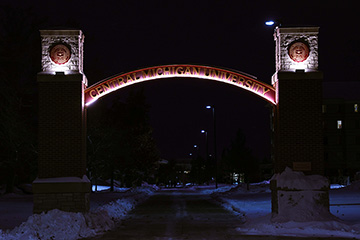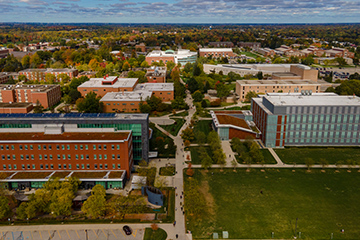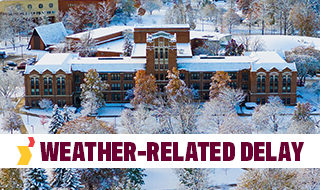Access controls added to four more CMU buildings
Plans continue to expand security in academic buildings
Update: As of January 2024, access controls are active in the following buildings:
- Anspach Hall
- Biosciences Building
- Dow Science Building
- Education and Human Services
- Grawn Hall
- Health Professions/College of Medicine
- Moore Hall
- Music Building
- North Art Studio
- Park Library
- Pearce Hall
- Wightman
As part of the next phase, work will begin at the following buildings in January 2024: IET Building, Finch Fieldhouse, Rowe Hall and Foust Hall.
Original story follows:
In an ongoing effort to strengthen and expand campus security, Central Michigan University is adding new electronic access controls to doors on four academic buildings.
Electronic door controls, already in place in each of CMU’s residence halls, allow the CMU Police Department to remotely secure exterior doors in the event of an emergency on campus.
Beginning Monday, August 7, these electronic access controls will be enabled in Pearce Hall, Anspach Hall, the Dow Science Building and Park Library.
CMU Police Lt. Cameron Wassman said this work is part of an ongoing process toward being prepared to manage an emergency.
“Just like the first round of classroom security improvements, certainly these additional tools further strengthen our aim of keeping campus secure and being prepared to respond to an emergency,” Wassman said.
CMU plans to install the controls on additional buildings throughout the year, including in the Health Professions Building, Education and Human Services Building, Moore Hall, Wightman Hall, North Art Studio, Music Building, and Grawn Hall, Wassman said. As funds become available, CMU will add controls to additional buildings.
Creating a more secure campus
A steering group with representatives from CMU Police, Facilities Management, Information Technology, and Academic Administration worked in partnership with external project consultants to identify priorities and guiding principles for this project.
CMU Police Lt. Mike Sienkiewicz said the work is about creating layers of protection. These electronic access controls add a new layer of security to a previous multi-year project of security upgrades. This included upgraded locking hardware that has been installed in all CMU classrooms.
“At CMU, safety is our No. 1 priority,” Sienkiewicz said. “Maintaining a friendly and welcoming campus was also one of the guiding principles for this project.”
Electronic access control locations have been coordinated with existing ADA-accessible doors and ADA parking locations in consultation with CMU Student Disability Services, Sienkiewicz said

Changes to building access
Designated building entrance doors will remain open and unlocked during scheduled building hours. As part of this project, CMU will standardize academic building hours and update exterior door signage on buildings to indicate enter/exit pedestrian traffic flow.
Extended hours access has been automatically added to the CMU CentralCard. Students, faculty and staff can use either their physical or mobile CentralCard to enter buildings with access controls, unless their card was issued before 2011.
Individuals with a CentralCard issued before 2011 must update their campus ID to ensure they are able to use doors with access controls. There are two options:
- Visit the CentralCard office in the Bovee University Center for a replacement card.
- Sign up for a mobile campus ID using your smartphone.
More program details, including building hours and extended hours access, can be found on the Building Access website. Additional campus safety information and resources can be found on the CMU Police webpage or the CMU Emergency Management webpage.




